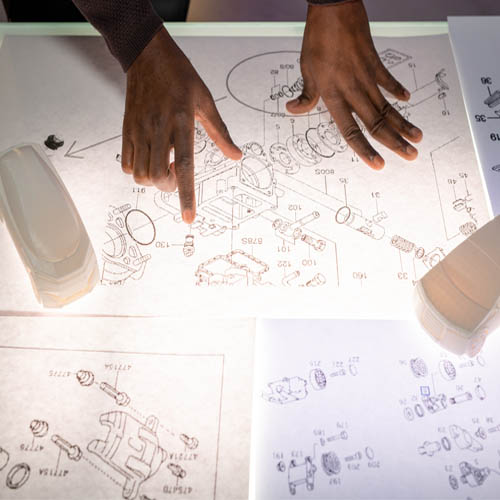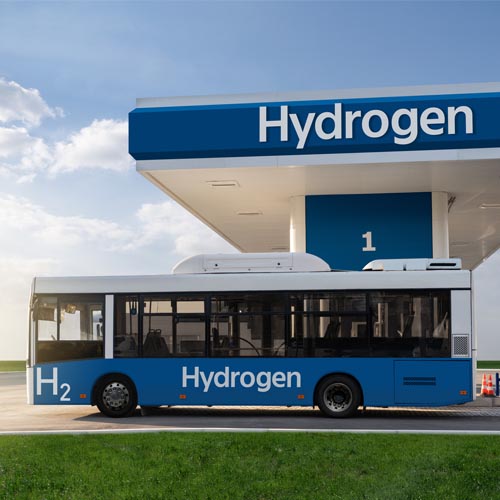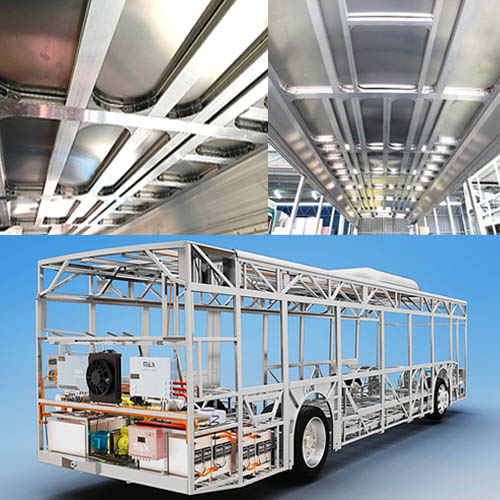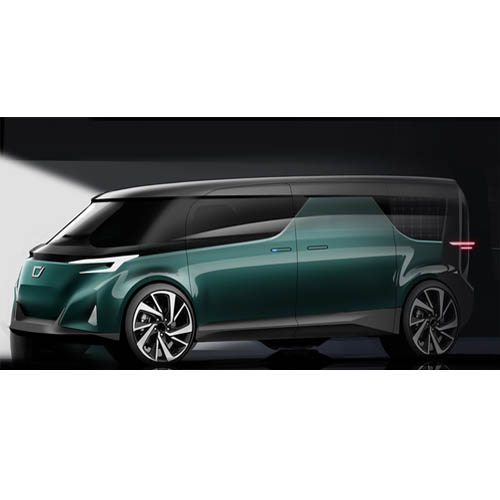
Advanced Driving Support Systems
is crucial to reach e-vehicles high efficiency and competitive advantage.
That’s why we will:
Reinvent the powertrain long range by upgrading;
- New battery types and control + monitoring software,
- BMS systems and optimization of charging and operation process for the purpose of extending battery life,
- High-efficiency inverter systems for controlling the electric motor unit,
- Hybrid (Edge + Cloud computing) Systems for collecting and analyzing battery health, drive and other equipment data to optimize operation,
- Analysis of data in the cloud collected from vehicles, prediction of failures and damages along with service management.

Driving system
Development of an innovative power supply module/device for an electric bus using hydrogen and methanol as fuel to charge vehicle's battery while in motion
The aim of the project is to develop a complete, hybrid, environmentally friendly, modular innovative power source for buses and electric vehicles, based on hydrogen fuel cells with an extender powered by bio-methanol.
1. The system allows for uninterrupted and ecological motion using hydrogen cells and emergency recharging of bus’s battery from an additional cell powered by bio-methanol.
2. The modular solution used will allow to power buses with different requirements, such as range and length.
3. Using appropriate modules with a repetitive power of 15-20kW, it allow to shape power parameters and ranges (and other bus / vehicle parameters) at the optimal cost against requirements.
4. For testing purposes, we will use aluminum frame licensed from 3rd party, frame that will be appropriately modified for the purposes of installation and testing of the developed power supply system.
5. The main power supply solution planned to be developed will be system based on hydrogen or methanol fuel cells with equal packet dimensions cooperating with the same energy buffering system.
6. The solution will be used both in the construction of an agglomeration city bus equipped with hydrogen distribution infrastructure and in those where liquid fuel (methanol) is required. The bio-methanol based power supply system will provide energy during the bus running, especially on long routes (distances> 500km) with easy recharging / refueling.
7. Same time there is a possibility of recharging the battery in night mode that will allow for cheap operation of the bus in urban conditions of typical routes that do not exceed 100km during a shift.
8. Creating a system powered by hydrogen or bio-methanol will also allow there use of waste heat (from the cell cooling system) to heat interior of the vehicle.
Project total value: 12MPLN is subsidies by NCBR (70% - 8,74MPLN)

Light frames
Minimizing the weight of vehicle’s components through use of 3D printing technology and use of advanced composite materials.
Tasks:
1. The aim of this research is to obtain modern ultra-light material technologies approved for use in electric vehicles (especially buses).
2. The use of 3D printing technology together with development and implementation of new composite materials for production of dedicated elements of electric vehicles.
3. Technology Development of structurally sound 3D foams for the needs of ultra-light parts for buses and electric vehicles.
4. Development of low-cost technology for the production of GLARE (Glass laminate aluminum reinforced epoxy) and FML (fiber metal laminate) composites in order to use construction elements for increased strength ultra-light electric special vehicles.
5. Analysis of the support structure / frame- to find frequencies and nodes so that they do not stand in the concentrations that should be in places with the highest amplitude.
6. Technologies of joining composites with metal and joining printed elements with metal sheets, metal elements and composites. Hybrid technologies can be used here.
7. Visual quality laser control.
8. 3D measurements for reverse engineering.
Project total value: 13,3MPLN is subsidies by NCBR (70% - 9,7MPLN)

e-Van
e-Van universal delivery vehicle with an N1 category electric drive
The "e-Van - universal delivery vehicle with an N1 category electric drive" is one of the activities of the National Center for Research and Development carried out under the pre-commercial PCP (Pre-Commercial Procurement) order formula.
1. The length of the Vehicle must be in the range of 4-7m.
2. The overall width of the vehicle (without side mirrors) must be in the range of 1.8 - 2.3m.
3. The total height of the vehicle may not be greater than 2.8m from the road level in a state of readiness for travel.
4. The power of the propulsion system must not be less than 70 kW.
5. The vehicle must have at least two doors (at least one on the driver's side and passenger side).
6. Any use for propulsion and heating sources burning solid, liquid and gaseous fuels in the Vehicle is prohibited.
7. There must be at least 3 seats following the Approval.
8. The permissible gross vehicle weight must comply with the applicable approval provisions for category N1 vehicles.
9. The vehicle must have a load space of at least 11.5 m3 in at least one of the Variants of Test Bodies.
10. The vehicle must be able to transport load with total weight of at least 1000kg.
